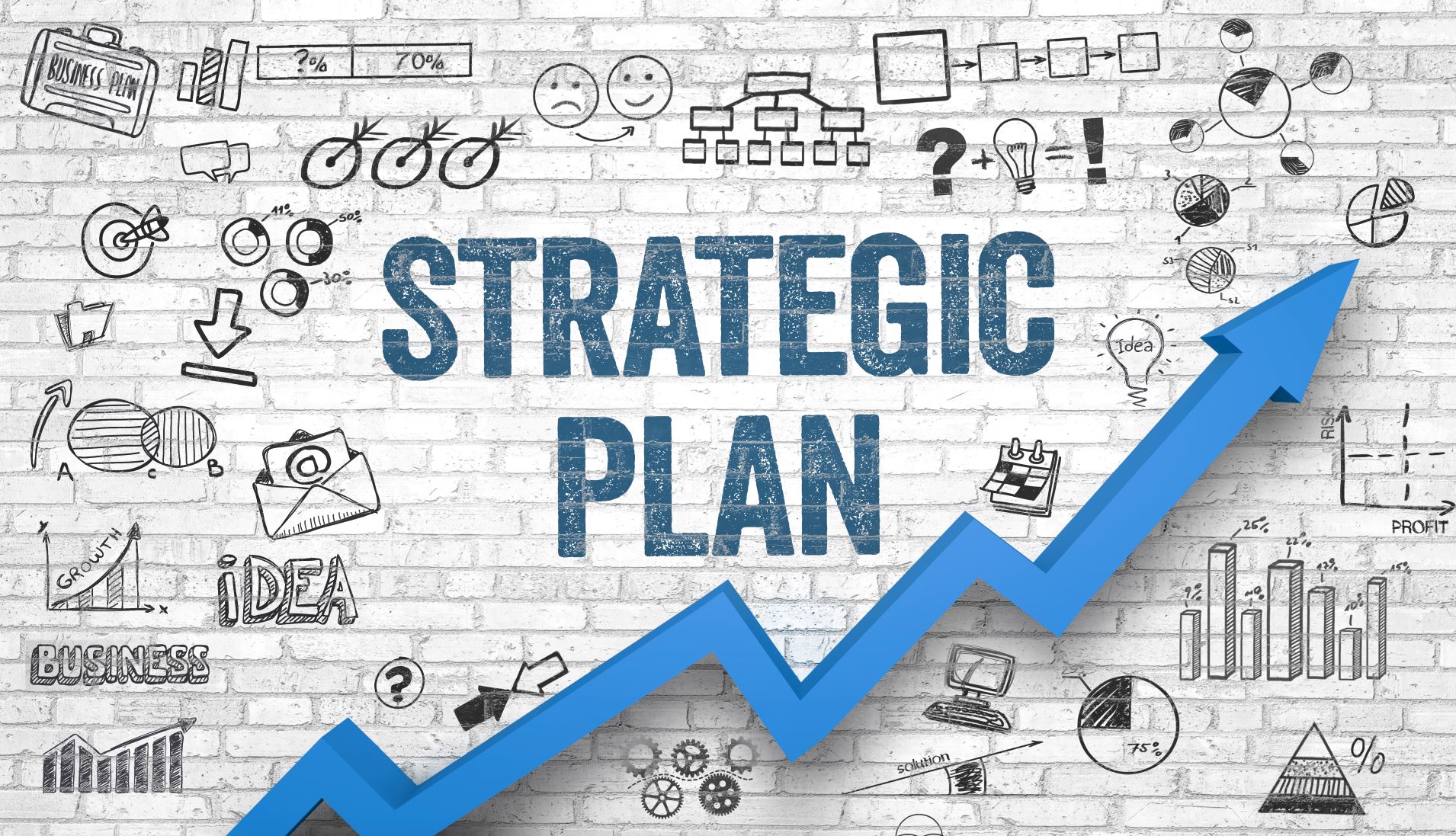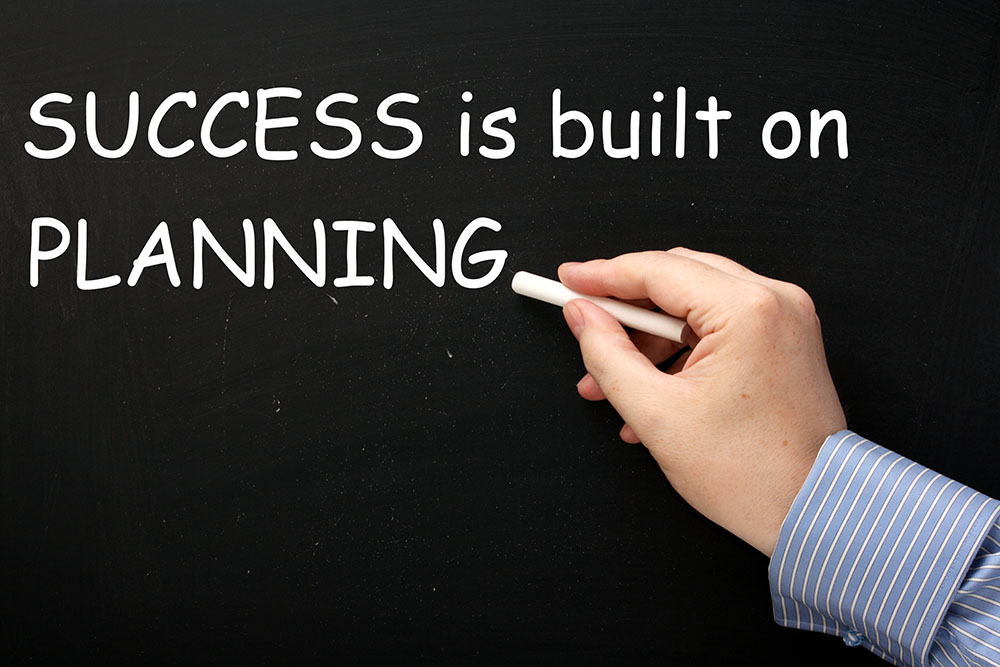
Nonprofit strategic planning often gets a bad rap, but time spent mapping out your organization’s future can save you from spinning your wheels, being busy but not effective.
When running a nonprofit, there’s so much to do and you’re on the go from morning ’til night.
But without a clear idea of where you’re going, all that activity may not actually move you forward toward your goals.
We all know we need a strategic plan, yet so many people don’t have one, probably because they’re afraid of this:
Your Board and staff sequestered in a room, led by a consultant, doing exercises on flip charts with sticky notes and dots, exercises that never lead to a clear, finished product you can understand or use.
Yuck, right?
It all seems very ethereal and very unhelpful when what you really need is a roadmap with clear steps to take. And who has time to take all the theory and translate it into an action plan?
It’s no wonder nonprofit strategic planning leads to frustration. What a waste of time!
So, let’s change that.
Here’s how to do nonprofit strategic planning in a way that will give you a clear picture of where your nonprofit is headed and how to get there.
What Strategic Planning for Nonprofits is About
 Simply put, nonprofit strategic planning is about determining the programs your nonprofit will provide, the impact these programs will have, and the resources you’ll need to make it happen.
Simply put, nonprofit strategic planning is about determining the programs your nonprofit will provide, the impact these programs will have, and the resources you’ll need to make it happen.
It’s about recognizing that your nonprofit cannot be everything for everybody. What are the programs your organization is uniquely capable of providing? In what ways will these programs improve lives?
Think of it as putting a stake in the ground around what your nonprofit will be known for.
Your strategic plan will drive everything that happens in your nonprofit, including your fundraising plan, your program development plan, your marketing plan, and everything else.
A strategic plan looks ahead up to five years. You may have an action plan for the next 12 months, but you need to look a bit further down the road to make the best program decisions, especially from a big-picture perspective.
Contrary to popular belief, a strategic plan is not a one-time activity. It’s not a single day of torture or inspiration, depending on how you feel about ice-breakers as co-worker bonding exercises.
Strategic planning often starts with a retreat to set the initial course, but you will need to create an actual written plan after the retreat and then review the plan regularly and do any necessary course corrections to stay on track.
Whether your nonprofit is brand new or you’re coming up on a milestone anniversary, nonprofit strategic planning is important for staying focused and moving forward.
Getting Started With Nonprofit Strategic Planning
 Your nonprofit’s strategic plan starts with your mission statement.
Your nonprofit’s strategic plan starts with your mission statement.
And you need to be crystal clear here. Who do you serve? What unmet need can you fulfill?
If your nonprofit is a food pantry, you serve people experiencing food insecurity. They need food and your organization provides it.
If your organization provides after-school support, you serve students and may provide academic enrichment, social opportunities, and activities. What about your students’ families? They may also have needs. What if parents often need computer access and resume assistance? Is this in line with your organization’s mission? Should it be? If you have computers available and parents come to the site anyway to pick up their kids, shouldn’t you offer this support? Or is this mission drift, getting away from the reason your nonprofit exists?
These are the types of conversations you can have as part of your strategic planning process. Adding this service would require revisiting your mission and carefully considering all pros and cons. Should supporting the families of the students you serve be part of your mission? Is that something you could work toward over time? Or should you partner with another organization to provide that service?
If your nonprofit is an animal rescue, your mission may be to save as many animals as possible from bad situations and transition them into happy forever homes. But there are going to be many questions to answer in getting to that goal.
What partners will you work with in the rescue process? What services will you provide to the animals in your care? Will you utilize foster homes? What services would make life better for your animals? What strategies and partnerships would allow you to rescue more animals? How much will everything cost, and how will you raise the money?
With such a complex endeavor, it’s easy to see how important it is to know your destination.
Over the years, I’ve seen way too many well-intentioned people start out with the goal to “save more animals” and they never stop to answer these questions. They just say “yes” to every person who calls asking for help when they should occasionally say “no.” And it causes lots of problems later when the mission becomes difficult to explain because of all the various pieces that don’t always go together or make sense.
For nonprofit strategic planning, your plan should include goals for the next three to five years in key areas that will ensure your organization fulfills its mission.
Consider marketing: Where will you find program participants?
Consider programs: How will you deliver the services your participants need? What resources will you need?
Consider all the other areas your nonprofit will need to address like volunteers, Board development, and fundraising.
A food pantry’s mission may seem simple: provide food to people who need it. But food pantries often have many goals beyond just providing food. What kind of food will the pantry serve? Will some of it be fresh? Will there be quality standards? Will anyone be able to access food, or will there be eligibility requirements? What will the shopping experience be like? Will customers get to choose their food? Or will they receive a pre-packed box of items? What about people who need the food but cannot come to the pantry, particularly elderly and disabled people? Will the pantry deliver food?
Strategic planning is where tough issues get hashed out by people who care deeply about the organization. If through the strategic planning process, it’s decided that you’ll provide 10 servings of fresh produce in each food box, you can then figure out the strategy for working with local gardeners, farmers, or grocery stores to get produce donated. Or figure out how to raise the money needed to purchase that food.
Look, a goal is not a goal if you don’t have a way to measure it. A crucial piece of strategic planning is setting goals you can measure.
Eradicating hunger in your community is not a goal. It’s a vision. But eliminating a waiting list for your food pantry is a measurable goal. As is doubling the number of food boxes you give out in a year.
Serving as many teens as possible through your youth program is not a goal. How many teens do you want to serve in years one, two, and three? Maybe you want to serve 150, then 175, and then 200. There may be more teens in your community that need support. The strategic planning process can help you and your team acknowledge your limits and set realistic, measurable goals.
By making everything specific and measurable, you can see when strategies are working and you have met your goals. There is so much involving nonprofit work that is not specific or measurable, such as the relationships you build with the people you serve. It’s important to seize every opportunity to set and work toward a concrete, measurable goal.
The Nonprofit Strategic Planning Process
When planning how you’ll get your strategic planning done, keep it simple and efficient.
The most important thing is that you commit to the process and the end result. Making the planning process complicated or time-consuming will not yield a better plan.
Here are some practical steps you can take to create your strategic planning process:
1.  Form a strategic planning committee. No one wants another committee, but having a committee of people willing to take the deep dive into long-range goals will give the organization a better chance of ending the process with a useful plan.
Form a strategic planning committee. No one wants another committee, but having a committee of people willing to take the deep dive into long-range goals will give the organization a better chance of ending the process with a useful plan.
Include people who are passionate about your organization’s work, including a few board members, staff members if you have them, a few dedicated volunteers, and people from the community your organization serves.
Let this committee guide the process, pulling in staff, volunteers, donors, program participants, and community leaders as needed to get their input.
2. Survey your community for ideas for long-range goals. Ask your stakeholders what they think the organization’s long-term goals should be. Involve a variety of stakeholders including Board, staff, volunteer, and the community you serve. Surveys can be a good way to gather information, as can focus groups, listening circles, and other types of small-group meetings. Really listen to what you are hearing, as others might suggest long-term goals that are different from yours.
Make a list of all suggested goals, with the ones mentioned most frequently at the top of the list.
3. Schedule a strategic planning retreat. Now it’s time to schedule a retreat and even though people are really excited, keep it to about a half day, maybe a little more if people are travelling to be part of the retreat. Saturday mornings work well for most organizations, giving attendees time and space to clear their calendars and their minds and focus. Build in time to share a meal to create an atmosphere of camaraderie.
Pick a location that is convenient and comfortable. Libraries often have conference rooms you can reserve. Your Board members might have access to a conference room through their employers. A committee member’s living room is also fine, if everyone will fit comfortably and the house can be free from distractions during the retreat. Poll your committee to make sure almost everyone can make it. Let everyone know how important it is that they attend.
4. Plan the retreat. Consider hiring a facilitator. Look at this cost as an investment in getting your strategic plan done faster and without you having to figure it all out. If you don’t want to hire a facilitator, consider asking someone involved in your organization with nonprofit strategic experience to lead the group. The executive director or Board chair can lead the retreat, but it is better if they can fully participate and not have to lead.
Work with the facilitator to plan the agenda. Share the agenda with committee members along with any activities the facilitator may want participants to complete ahead of time.
5. Do a SWOT analysis: Either during or before the retreat, complete a SWOT analysis to determine the organization’s strengths, weaknesses, opportunities, and threats. This can be beneficial when setting realistic goals.
This popular exercise helps get the conversation going. It’s helpful to look at internal and external factors that might support or obstruct the nonprofit’s ability to reach its goals.
 6. Set long-range goals: During the retreat, go over all the goals suggested by stakeholders and discuss the goals that should go into the strategic plan. Limit the number of strategic goals in your plan to three or less. Your plan will be too unwieldy if you have too many goals and it will be difficult to figure out where to spend your time if there are too many things to work toward.
6. Set long-range goals: During the retreat, go over all the goals suggested by stakeholders and discuss the goals that should go into the strategic plan. Limit the number of strategic goals in your plan to three or less. Your plan will be too unwieldy if you have too many goals and it will be difficult to figure out where to spend your time if there are too many things to work toward.
Your main goals might have subgoals that go with it. For example, if your nonprofit is an animal shelter, your overall strategic goal might be to lower your euthanasia rate by 50%. To accomplish that, you’ll need to increase the number of foster families, decrease the number of owner surrenders, and increase spay/neuter surgeries. Each of those goals should be measurable and have specific activities with measurable outcomes associated with them.
With each goal, include the program the goal falls under, the cost, the staff and volunteers required to achieve the goal, and any facility needs.
We like setting an Impact Goal that describes how your nonprofit will make a difference in the coming years. Then let other goals fall out from that one.
Walking out of a retreat with a couple of clear long-range goals is a huge accomplishment! You should feel fantastic about getting to this point.
7. Identify the resources you need to achieve your goals. You may have time to discuss this at the retreat, or this may be the topic for your next committee meeting. What do you need to add or subtract to reach your long-range goals? Are there additional programs you need? Programs you need to shut down? The planning process should help you get clear about what you need to make your plan a reality.
Fundraising. Ugh. Nobody wants to talk about it, but you cannot reach goals without money, and you need to feel secure that you have the processes in place to raise the money to fund your programs. Plus your strategic plan is actually the springboard for your fundraising plan, especially if your nonprofit is new.
A discussion about resources should also include partnerships with other organizations, along with both volunteers and paid staff.
8. Short-term goals. Set the short-term goals needed to achieve the long-range goals. What needs to happen in the next 12 months? The 12 months after that? And the 12 months after that?
Setting and reviewing short-term goals works as an accountability measure, keeping the strategic plan in view. Without short-term goals, you may look at your strategic plan three years from now and feel like you barely remember drafting it.
9. Draft an action plan. Who will do what and when, so your organization can achieve its short-term and long-range goals? This is the nitty-gritty of any plan and critical for taking action to move the plan forward.
Share the action plan with everyone on the strategic planning committee, so they can confirm that the action plan aligns with their understanding of the goals. At this point, everyone on the committee should be clear on the direction the organization is headed.
10. Share the strategic plan with all stakeholders. Now it’s time to introduce the strategic plan to everyone with a stake. Consider holding an event, in person or online, to walk people through the strategic plan. Then send a digital copy to everyone with a stake in the plan. Consider posting the plan on your website. Pull out the goals and post the goals in your office, and encourage others to do the same.
The strategic planning process can take time, but it’s time well spent. After your initial retreat, expect to meet several more times to work on the document, refining goals and crunching numbers until you get to a final plan that feels just right for your nonprofit.
Once it’s done, it’s not set in stone. Your strategic plan is a living document, and you should make changes as needed, especially to short-term goals. Many factors may contribute to your need to adjust your goals, including factors outside your control.
We live in a fast-moving world, and your organization needs to change with it, adapting to external forces and taking advantage of new opportunities. A strategic plan makes it easier to adapt and change, as you can make each decision by considering your long-range goals and how the decision would help you achieve your long-range goals.
Ninja tip: Add the strategic plan as an item on your Board meeting agenda every month so the plan is always top of mind and so the Board can make sure the work is on track.
The Bottom Line
 Your nonprofit strategic plan will set your organization up for success, not just for this year but for the next three to five years. It will free you from worrying about how you are going to do everything you want to do, because the answers will be in one place: your strategic plan.
Your nonprofit strategic plan will set your organization up for success, not just for this year but for the next three to five years. It will free you from worrying about how you are going to do everything you want to do, because the answers will be in one place: your strategic plan.
The nonprofit strategic planning process forces you to bring your stakeholders together and listen to what they have to say, something you may want to do but feel like you don’t have time to do. Now, you have to. The process forces you to talk to your stakeholders about goals, which often leads to deeper conversations about the essence of your organization’s work and can uncover additional needs or resources that you didn’t know about.
Your strategic plan will position you to be the strongest, most effective nonprofit organization you can be. In the nonprofit world, when you are stronger and more effective at what you do, you can make a bigger impact and change even more lives.






Fantastic advise in easy digestible language and diagrams. We are still getting funds in through this tough financial climate but always looking at ways to get more professional and become self sustainable.
So glad this was helpful!